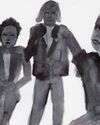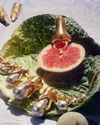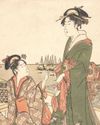Under the helm of British designer Stuart Vevers, Coach, the once-dormant all-American heritage brand, is reinstated with the glory of its heyday.

In 2013, news broke that British designer Stuart Vevers would take over the helm at Coach, America’s original house of leather, as the brand’s executive creative director. Already on his resume at the time of appointment were tenures at Mulberry and Loewe, both of which boast a reputation for their unparalleled prowess in leather craftsmanship and equally successful ready-to-wear counterparts. At the former, he reinvigorated the Bayswater tote with a leather cage around it and at the latter, redesigned the brand’s iconic Amazona bag.
There was little surprise then, when Vevers was appointed head honcho at Coach. It was a man of that calibre who bore the promise of reinventing a heritage behemoth whose tried ideas had gone sterilein the landscape of contemporary luxury.
“Coming on board Coach, I felt it was really important to think about how the next generation considers luxury today,” Vevers said. “One of the things I was drawn to in joining Coach was that I felt it had a kind of fresh technique on what luxury means. It was a warmer, friendlier take on luxury. I felt like the rules of luxury were breaking down. Today, a cool sneaker, backpack and sweatshirt can all be luxury items and Coach felt like a good place to explore that.”
In the brand’s longstanding history of more than seven decades, its offerings had, until Vevers’s appointment, stayed within the perimeter of leather goods and accessories. When Coach was first conceived out of a factory loft in Soho, Manhattan, in the 1940s, it specialised in handmade wallets and billfolds. Later, in the early 1960s, it diversified into leather handbags. Designer Bonnie Cashin’s carryalls, painted in vibrant hues, cemented Coach’s reputation as America’s quintessential house of leather.
この記事は T Singapore: The New York Times Style Magazine の May 2018 版に掲載されています。
7 日間の Magzter GOLD 無料トライアルを開始して、何千もの厳選されたプレミアム ストーリー、9,000 以上の雑誌や新聞にアクセスしてください。
すでに購読者です ? サインイン
この記事は T Singapore: The New York Times Style Magazine の May 2018 版に掲載されています。
7 日間の Magzter GOLD 無料トライアルを開始して、何千もの厳選されたプレミアム ストーリー、9,000 以上の雑誌や新聞にアクセスしてください。
すでに購読者です? サインイン

Look At Us
As public memorials face a public reckoning, there’s still too little thought paid to how women are represented — as bodies and as selves.

Two New Jewellery Collections Find Their Inspiration In The Human Anatomy
Two new jewellery collections find their inspiration in the human anatomy.

She For She
We speak to three women in Singapore who are trying to improve the lives of women — and all other gender identities — through their work.
Over The Rainbow
How the bright colours and lively prints created by illustrator Donald Robertson brought the latest Weekend Max Mara Flutterflies capsule collection to life.

What Is Love?
The artist Hank Willis Thomas discusses his partnership with the Japanese fashion label Sacai and the idea of fashion in the context of the art world.

The Luxury Hotel For New Mums
Singapore’s first luxury confinement facility, Kai Suites, aims to provide much more than plush beds and 24-hour infant care: It wants to help mothers with their mental and emotional wellbeing as well.

Who Gets To Eat?
As recent food movements have focused on buying local or organic, a deeper and different conversation is happening among America’s food activists: one that demands not just better meals for everyone but a dismantling of the structures that have failed to nourish us all along.

Reimagining The Future Of Fashion
What do women want from their clothes and accessories, and does luxury still have a place in this post-pandemic era? The iconic designer Alber Elbaz thinks he has the answers with his new label, AZ Factory.

A Holiday At Home
Once seen as the less exciting alternative to an exotic destination holiday, the staycation takes on new importance.
All Dressed Up, Nowhere To Go
Chinese supermodel He Sui talks about the unseen pressures of being an international star, being a trailblazer for East Asian models in the fashion world, and why, at the end of the day, she is content with being known as just a regular girl from Wenzhou.